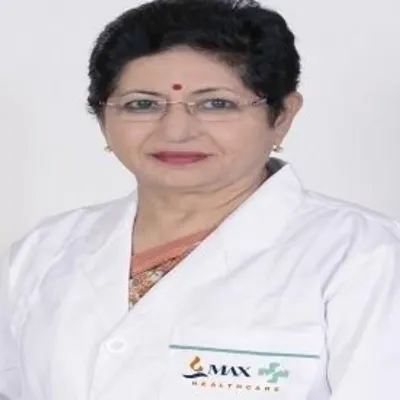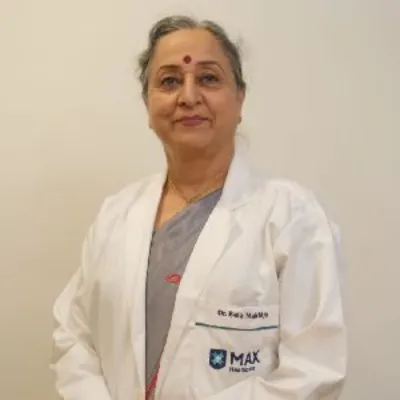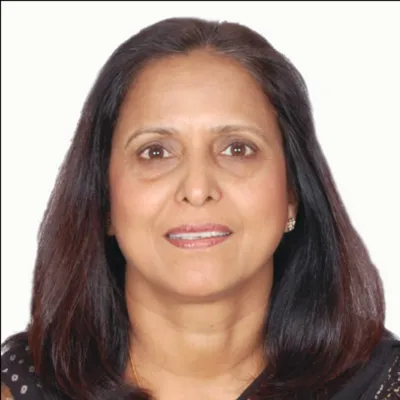Best Cardiologists in Artemis Hospital Gurgaon
 10 December,2025
Read More
10 December,2025
Read More
Starting From: USD 1300-5000
Procedure Type: Surgical Procedure
Hospitalization Days: 2-7 Days
Procedure Duration: 2-3 Hrs
Recovery Time: 2-6 Weeks
Success Rate: 98%
Myomectomy is affordable in India. The cost of Myomectomy in India lies between USD 1300-5000. The exact procedure price depends on multiple factors such as the surgeon's experience, type of hospital, severity of the condition, patient's general condition,�etc.
Myomectomy is a surgical procedure to remove uterine fibroids (non-cancerous growths) while preserving the uterus. This treatment offers women a renewed quality of life by alleviating symptoms and maintaining fertility. The myomectomy surgery cost in India varies based on the size and location of the fibroids, and the surgery can be performed through
1. Open Myomectomy (Abdominal Myomectomy): This procedure involves a larger incision in the lower abdomen to access and remove fibroids. It is typically used for larger or numerous fibroids.
2. Laparoscopic Myomectomy: This is a minimally invasive procedure where small incisions are made, and a laparoscope (a thin tube with a camera) guides the removal of fibroids. This method usually results in less postoperative pain and quicker recovery.
3. Robotic-Assisted Myomectomy: This procedure is similar to laparoscopic myomectomy but uses robotic arms controlled by the surgeon for enhanced precision. It is especially beneficial for complex or hard-to-reach fibroids.
4. Hysteroscopic Myomectomy: This procedure is performed through the vagina and cervix using a hysteroscope to remove fibroids that protrude into the uterine cavity. This technique requires no external incisions.
Myomectomy surgery is often recommended for women experiencing
Before making any decisions about myomectomy surgery, it is essential to consult a qualified doctor to assess whether you are a suitable candidate for the procedure and to determine the myomectomy price in India. Factors such as the size, number, and location of fibroids, overall health condition, and future pregnancy plans will determine if surgery is the best option for you.
Additionally, the type of myomectomy —whether abdominal, laparoscopic, robotic, or hysteroscopic —should be determined by a healthcare professional after a thorough diagnosis.
Generally, open myomectomy cost in India are less than robotic myomectomy cost in India. However, we have tried to give you an average price between the different types of surgeries. The cost of myomectomy surgery in India generally falls within the following estimated price ranges.
These figures typically cover routine fibroid removal surgery costs in India performed without complications.
Laparoscopic myomectomy cost in India, robotic myomectomy cost in India, open myomectomy cost in India, and hysteroscopic myomectomy cost in India vary depending on the hospital, surgeon’s expertise, and case complexity. Here is a breakdown:
|
Procedure Type |
Cost Range (INR) |
Cost Range (USD) |
|
Abdominal Myomectomy |
INR 90,000 – INR 2,15,000 |
USD 1,084 – USD 2,590 |
|
Laparoscopic Myomectomy |
INR 95,000 – INR 2,65,000 |
USD 1,145 – USD 3,193 |
|
Robotic-Assisted Myomectomy |
INR 3,50,000 – INR 5,25,000 |
USD 4,217 – USD 6,325 |
|
Hysteroscopic Myomectomy |
INR 56,800 – INR 1,30,000 |
USD 684 – USD 1,566 |
The cost of myomectomy surgery in India is influenced by several key factors, which can vary significantly depending on the individual patient's specific circumstances. Here are the factors affecting myomectomy surgery cost in India:
1. Type of Myomectomy:
2. Surgeon’s Expertise:
3. Geographical Location:
4. Hospital Facilities:
5. Anaesthesia and Medication:
6. Pre- and Post-operative Care:
7. Insurance and Medical Coverage:
8. Complexity of the Case:
These factors contribute to the variability in fibroid surgery costs in India across different regions and hospitals.
The myomectomy surgery cost in India varies across major cities, influenced by factors such as the hospital's infrastructure, the surgeon's expertise, and the specific type of procedure performed. Below is an overview of the approximate myomectomy cost breakdown in Indian cities:
|
City |
Min Cost (INR) |
Max Cost (INR) |
Min Cost (USD) |
Max Cost (USD) |
|
New Delhi |
INR 1,25,000 |
INR 2,75,000 |
USD 1,500 |
USD 3,300 |
|
Mumbai |
INR 1,50,000 |
INR 3,00,000 |
USD 1,800 |
USD 3,600 |
|
Bengaluru |
INR 1,75,000 |
INR 3,25,000 |
USD 2,100 |
USD 3,900 |
|
Chennai |
INR 1,50,000 |
INR 3,00,000 |
USD 1,800 |
USD 3,600 |
|
Hyderabad |
INR 1,80,000 |
INR 4,50,000 |
USD 2,160 |
USD 5,400 |
|
Kolkata |
INR 2,00,000 |
INR 3,50,000 |
USD 2,400 |
USD 4,200 |
|
Pune |
INR 1,50,000 |
INR 3,00,000 |
USD 1,800 |
USD 3,600 |
|
Chandigarh |
INR 1,75,000 |
INR 3,25,000 |
USD 2,100 |
USD 3,900 |
|
Gurugram |
INR 1,25,000 |
INR 2,75,000 |
USD 1,500 |
USD 3,300 |
|
Ahmedabad |
INR 1,75,000 |
INR 3,25,000 |
USD 2,100 |
USD 3,900 |
Metro cities like Delhi and Mumbai have higher cost ranges due to the presence of premium hospitals, while Tier 2 cities offer quality care at lower prices. Also, prices fluctuate depending on the type of surgery. If you are going for a robotic hysterectomy, the prices go on the higher side. Always consult a healthcare provider for an accurate estimate.
Medical tourists often travel to different countries to find the best balance of affordable care and quality. Here’s a general cost comparison for myomectomy surgery across popular destinations:
|
Country |
Approximate Cost Range (USD) |
|
India |
USD 1,300 – USD 5,000 |
|
Turkey |
USD 3,000 – USD 7,000 |
|
Thailand |
USD 4,500 – USD 5,500 |
|
UAE |
USD 5,250 – USD 6,500 |
|
UK |
USD 8,000 – USD 10,000 |
|
USA |
USD 10,000 – USD 15,000 |
While Turkey and Thailand are popular medical destinations, India stands out for its affordable pricing, world-class hospital infrastructure, and highly skilled specialists.
1. Consultations & Diagnostic Tests:
2. Other Evaluations:
For patients with coexisting conditions such as hypertension or diabetes, additional tests may be necessary, leading to increased pre-treatment expenses.
Insurance coverage can significantly ease the financial burden associated with fibroid surgeries.
While the average myomectomy cost in India can vary depending on the surgical method and hospital location, many insurance providers cover at least part of the expenses for medically necessary procedures.
Patients are advised to check policy details, including pre-authorization requirements and hospital network eligibility. For those without insurance, flexible payment plans and medical financing options are available to manage the estimated fibroid removal cost in India, making quality treatment accessible without overwhelming upfront costs.
Myomectomy surgery, though essential for improving quality of life, can place a financial burden on individuals and families. Here are some practical ways to manage myomectomy surgery cost in India effectively:
Taking proactive steps in planning surgery can significantly ease the financial stress and support a smoother treatment journey.
Deciding to undergo a myomectomy, whether to alleviate symptoms or preserve fertility, is a significant life decision. At MediJourney, we are committed to supporting your journey with empathy, transparency, and medical expertise tailored to your individual needs.
Our approach prioritises seamless care at every stage:
By combining trusted medical partnerships with patient-centred guidance, MediJourney streamlines access to high-quality gynaecological care in India. Let MediJourney be your trusted partner during these challenging times. Contact us today.
Answer: Yes, myomectomy can boost fertility by removing fibroids that interfere with conception or pregnancy, helping many women achieve successful pregnancies.
Answer: Laparoscopic and hysteroscopic myomectomies offer faster recovery, less pain, and smaller scars compared to open surgery, with excellent outcomes.
Answer: Yes, it effectively reduces symptoms like heavy bleeding, pelvic pain, and bloating, leading to improved comfort and quality of life.

Senior Director
Gynecologist and Obstetrician, IVF Specialist
Max Super Speciality Hospital, Shalimar Bagh, New Delhi

Senior Director
Gynecologist and Obstetrician, IVF Specialist
Max Smart Super Speciality Hospital, Saket, New Delhi

Senior Director
Gynecologist and Obstetrician
Max Smart Super Speciality Hospital, Saket, New Delhi

Senior Director
Gynecologist and Obstetrician
Max Smart Super Speciality Hospital, Saket, New Delhi

Senior Director
Gynecologist and Obstetrician
Max Smart Super Speciality Hospital, Saket, New Delhi

Senior Consultant
Gynecologist and Obstetrician, Laparoscopic Surgeon
Madhukar Rainbow Children Hospital, Malviya Nagar, New Delhi
Dr. Meenakshi Banerjee is a Gynaecologist & Obstetrician with 21+ years of experience. Her expertise is in treating complicated ovarian cysts laparoscopically & by minimally invasive ureteroscopic techniques of Hysteroscopy and Colonoscopy. ...
The duration of a uterine artery embolization (UAE) for fibroids as a pre-myomectomy procedure typically ranges from 1 to 2 hours. However, the exact length of the procedure may vary depending on factors such as the number, size, and location of fibroids being treated, as well as any complexities encountered during the intervention.
The success rate of uterine artery embolization (UAE) for fibroids as a pre-myomectomy intervention is approximately 85-90%. Most patients experience significant improvement in symptoms such as heavy menstrual bleeding and pelvic pain, leading to enhanced quality of life and successful outcomes.
The success rate of uterine artery embolization (UAE) for fibroids as a pre-myomectomy intervention is approximately 85-90%. Most patients experience significant improvement in symptoms such as heavy menstrual bleeding and pelvic pain, leading to enhanced surgical outcomes and improved quality of life.
After UAE for fibroids-pre myomectomy surgery, patients are provided with pain medication to manage post-procedure discomfort. Over-the-counter pain relievers or prescription medications may be prescribed by the healthcare provider. Additionally, applying heat packs to the abdomen can help alleviate pelvic pain or cramping.
Patients can typically return to normal activities, including work and daily tasks, within a week after UAE for fibroids-pre myomectomy surgery. However, individual recovery times may vary, and patients should listen to their bodies and avoid overexertion during the recovery period.
Physical therapy is generally not required after UAE for fibroids-pre myomectomy surgery. However, patients may benefit from light activity such as walking to promote circulation and aid in recovery. It's essential to follow the healthcare provider's instructions regarding activity level and any specific post-procedure recommendations.
The duration of a uterine artery embolization (UAE) for fibroids-pre myomectomy procedure typically ranges from 1 to 2 hours. However, the exact length of the procedure may vary depending on factors such as the number, size, and location of fibroids being treated, as well as any complexities encountered during the intervention.
Insurance coverage for uterine artery embolization (UAE) for fibroids-pre myomectomy surgery varies depending on the individual's insurance plan and policy. Some insurance plans may cover the procedure partially or in full, while others may require pre-authorization or have specific criteria for coverage. It's essential to check with your insurance provider for details.
After UAE for fibroids-pre myomectomy, patients may not require significant lifestyle changes. However, maintaining a healthy diet, regular exercise, and managing stress can promote overall well-being. Patients should follow the healthcare provider's recommendations for post-procedure care and attend follow-up appointments for monitoring and support.
Yes, alternative treatments to uterine artery embolization (UAE) for fibroids-pre myomectomy include medication, hormone therapy, myomectomy (surgical removal of fibroids), and hysterectomy (removal of the uterus). The choice of treatment depends on factors such as fibroid size, location, symptoms, and patient preferences. Consulting with a healthcare provider is recommended.
Post-surgery, patients are encouraged to engage in light activities like walking to promote circulation and aid in recovery. Strenuous exercises or heavy lifting should be avoided initially. Patients should consult with their healthcare provider for personalized exercise recommendations based on their recovery progress.
The Art of Effective Communication
 10 December,2025
Read More
10 December,2025
Read More
 09 December,2025
Read More
09 December,2025
Read More
 05 December,2025
Read More
05 December,2025
Read More
 04 December,2025
Read More
04 December,2025
Read More
 27 November,2025
Read More
27 November,2025
Read More
 25 November,2025
Read More
25 November,2025
Read More